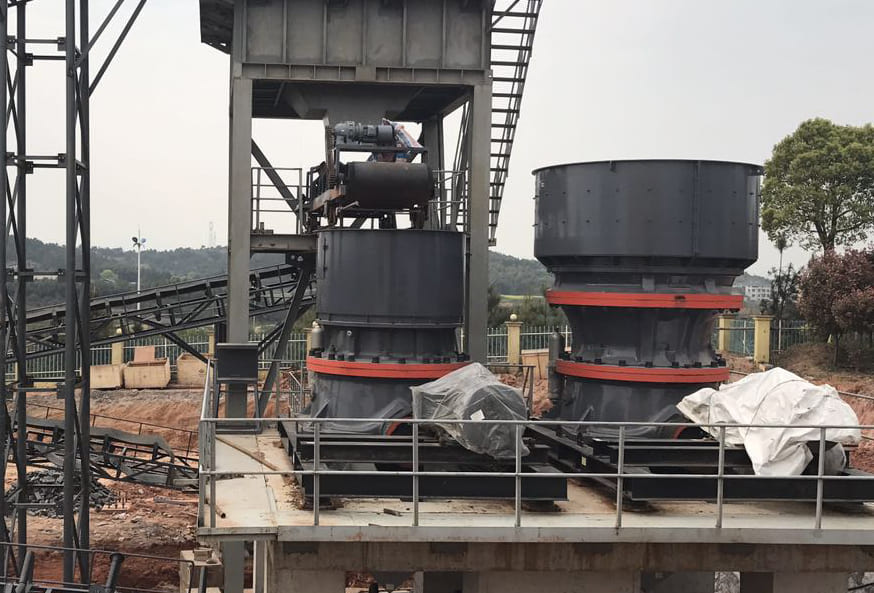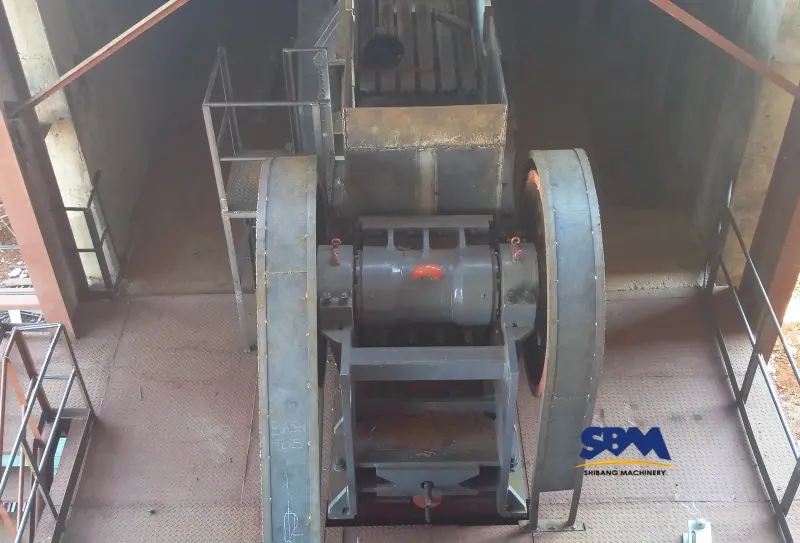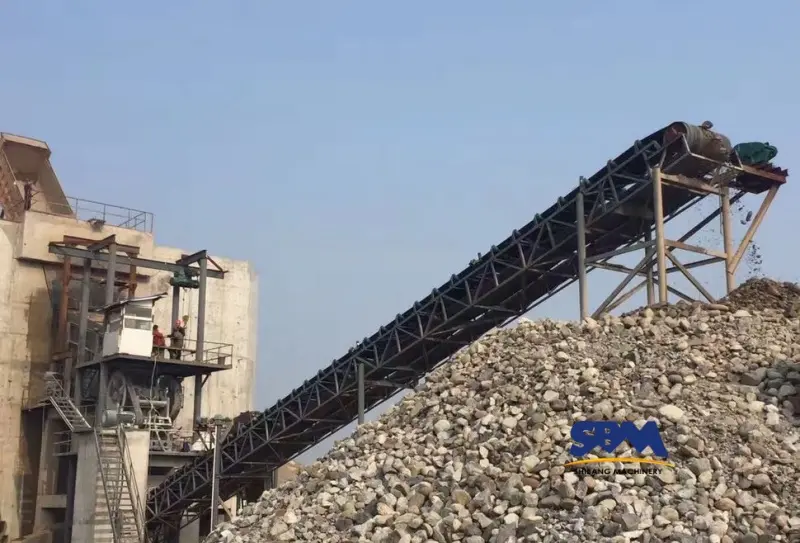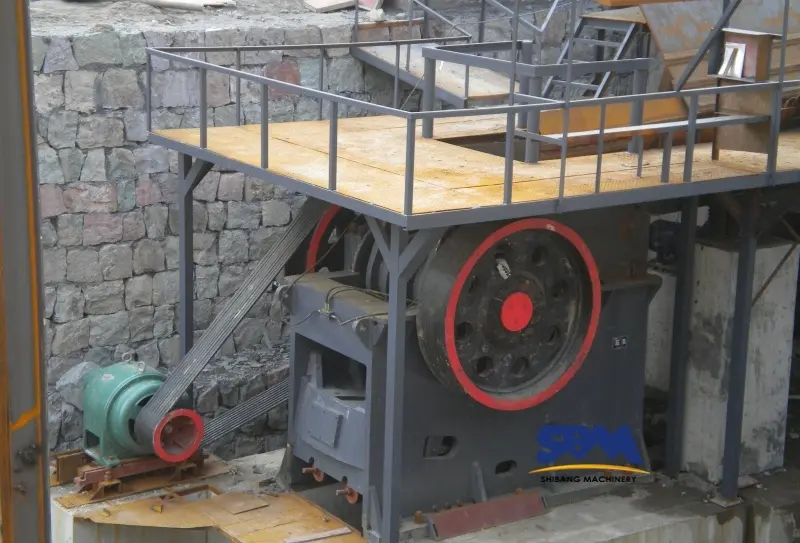E-mail: [email protected]
Qu'est-ce qu'un broyeur de pierres hydraulique?
Hydraulic stone crusher, also known as a concasseur à cône hydraulique or hydraulic rock crusher, is a type of crushing machine used to crush stones and rocks into smaller sizes. It utilizes hydraulic pressure and a hydraulic cylinder to perform the crushing operation.

A hydraulic cylinder, hydraulic power unit, and control panel make up the stone crusher’s hydraulic system. The hydraulic cylinder presses down on the pebbles or stones, breaking or crushing them into smaller pieces. The hydraulic power unit supplies the hydraulic system with the required power, and the control panel enables the operator to manage the crusher’s operations.
In many different sectors, y compris l'exploitation minière, carrière, building, and demolition, hydraulic stone crushers are often employed. They are very helpful in breaking down abrasive and hard minerals like limestone, basalte, and granite.
As opposed to conventional crushers, these ones have a large crushing capacity, efficient operation, and changeable crushing settings. They may be used to create crushed stones in a range of sizes, making them appropriate for various landscaping and building projects.
How does a hydraulic stone crusher work?
- Chambre de concassage: The crushing chamber of the hydraulic stone crusher is where the boulders or stones are placed to be crushed. Depending on the type and use, the crushing chamber’s size and form may change.
- Hydraulic Cylinder: A hydraulic cylinder located within the crusher exerts force on the stones or rocks. A piston is attached to the cylinder, which is normally found at the bottom of the crusher. The piston moves when hydraulic pressure is given to the cylinder, applying force to the pebbles or stones.
- Processus de concassage: The piston pushes against the pebbles or stones in the crushing chamber when the hydraulic pressure is applied, forcing them to shatter or compress. The cylinder’s hydraulic power enables the crusher to exert strong pressure on the rocks as it crushes them.
- Adjustable Crushing Settings: The crushing parameters of hydraulic stone crushers are typically customizable. By altering the distance between the crushing surfaces, the operator may thereby regulate the size of the produced material. The operator can get the crushed stones to the right size by adjusting the gap.
- Décharge de matériaux écrasés: The boulders or stones are evacuated from the crushing chamber once they have been reduced to the required size. The crushed material may be transported somewhere for additional processing or applied directly to projects like building or other uses.
- Hydraulic System and Control: A hydraulic system, which consists of hydraulic cylinders, pumps, and control valves, is used to run the hydraulic stone crusher. The hydraulic pressure necessary for the crushing operation is produced and controlled by the hydraulic power unit. The operator can monitor the operation and change the parameters for the crusher using the control panel.
What are the common applications of a hydraulic stone crusher?
- Exploitation minière: In the mining business, hydraulic stone crushers are frequently used to crush brittle, abrasive rocks including granite, basalte, and ore minerals. They are employed to reduce the size of mined ore and minerals in preparation for further processing or for shipment.
- Carrières: Large boulders or stones removed from quarries are crushed in the quarrying sector using hydraulic stone crushers. They are crucial pieces of machinery for the manufacturing of aggregates, which are needed for making concrete, constructing roads, and other construction-related operations. For varied purposes, the crushed stones are separated into various sizes.
- Construction: In construction projects, hydraulic stone crushers are used to reduce the size of rocks or stones so that they may be used as building materials. They are frequently employed in the building of buildings, bridges, autoroutes, and infrastructure projects.
- Démolition: In demolition work, hydraulic stone crushers are used to disassemble concrete buildings and other materials. They have the ability to pulverize and crush concrete, making demolition and recycling of building waste efficient.
- Landscaping and Decorative Stone Production: Rocks and stones are crushed for use in landscaping using hydraulic stone crushers. They are able to produce crushed stones in a range of sizes for use in driveways, bordures de jardin, paths, and ornamental stone applications.
- Production globale: In order to produce aggregates, which are critical elements in the building sector, hydraulic stone crushers are extremely important. To add strength, stability, and longevity to concrete, asphalte, and other building materials, aggregates are employed.
- Industrial Applications: In many industrial fields where the crushing of rocks or stones is necessary, hydraulic stone crushers may be used. This comprises sectors including chemical processing, métallurgie, céramique, and cement.
How is maintenance carried out on a hydraulic stone crusher?
- Regular Inspection: Regularly examine the hydraulic stone crusher to find any potential problems or wear indicators. Check the hydraulic system for leaks, damage, or loose connections, paying particular attention to the hoses, fittings, and cylinders. Examine the general state, lubrication system, electrical parts, and safety features of the crusher.
- Lubrification: For a hydraulic stone crusher to run smoothly, proper lubrication is essential. Use the recommended lubricants and adhere to the manufacturer’s recommended lubrication intervals. Check and re-lubricate the crusher’s bearings, gears, and other moving parts on a regular basis.
- Filter Replacement: Filters are frequently used in stone crusher hydraulic systems to keep the hydraulic fluid clean and to eliminate impurities. To avoid clogging and guarantee optimal hydraulic system performance, regularly check and replace these filters as the manufacturer advises.
- Belt and Conveyor Maintenance: If the hydraulic stone crusher has a conveyor belt, make sure you routinely maintain and examine it. Look for any indications of wear, alignment issues, or damage. Verify that the belt tension is appropriate and make any required adjustments. Belts that are broken or worn out should be changed right away to avoid unplanned failures.
- Component Inspection and Replacement: Some parts of the hydraulic stone crusher may deteriorate or wear out over time. Check for evidence of wear on parts including the crushing chamber, liners, and jaw plates. To maintain the effectiveness and performance of the crusher, replace these parts as necessary.
- Electrical System Maintenance: Check the hydraulic stone crusher’s electrical parts, wiring, and connections often. Make sure that every electrical system is safeguarded and properly grounded. To avoid loose connections or electrical failures, clean and tighten electrical connections.
- Training and Operator Awareness: For a hydraulic stone crusher to operate safely and effectively, personnel must have the proper training. Provide instruction on proper operation techniques, safety measures, and maintenance methods. Operators should be encouraged to report any problems or anomalies right away.
Bureau du siège social
WhatsApp:+8615225176731
E-mail: [email protected]
Adresse: Non. 1688, Gaoke East Road, Nouveau quartier de Pudong, Shangai, Chine.
Site Internet: https://www.mill-sbm.com/
Bureau du siège social
WhatsApp:+8615225176731
E-mail: [email protected]
Adresse: Non. 1688, Gaoke East Road, Nouveau quartier de Pudong, Shangai, Chine.
Site Internet: https://www.mill-sbm.com/
Contenu des articles
Messages récents
- Traitement du minerai d'or: Jaw Crusher EfficiencyEffective gold ore processing hinges on precise crushing operations, where jaw crushers convert rugged deposits into optimized feedstock. Discover how to fine-tune these machines for peak productivity without compromising worksite…
- Gravier de la rivière écrasant avec des brasseurs de mâchoireA cornerstone of modern construction, river gravel delivers unmatched toughness and adaptability for roads, béton, and erosion control. Yet its rugged, irregular nature demands machinery built to endure—enter jaw crushers.…
- Comment choisir la bonne taille de broyeur de mâchoire pour votre industrie?La sélection de la bonne taille de broyeur de mâchoire n'est pas un jeu de devinettes - c'est une science enracinée dans la dynamique des matériaux et le calcul opérationnel. Pour les industries, de l'exploitation dure-rock au recyclage du béton urbain, Même un…



